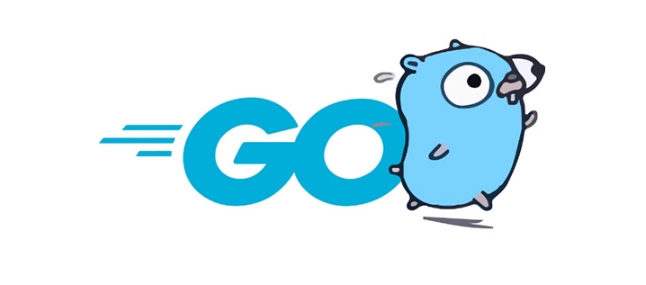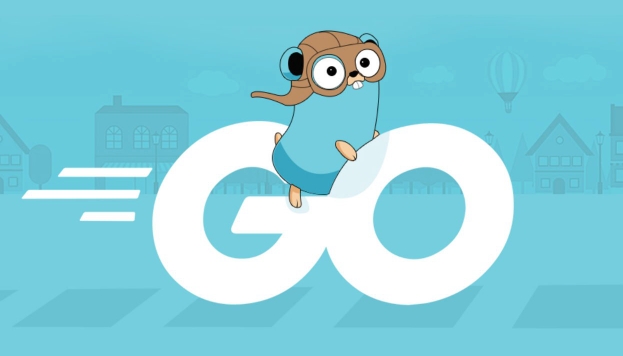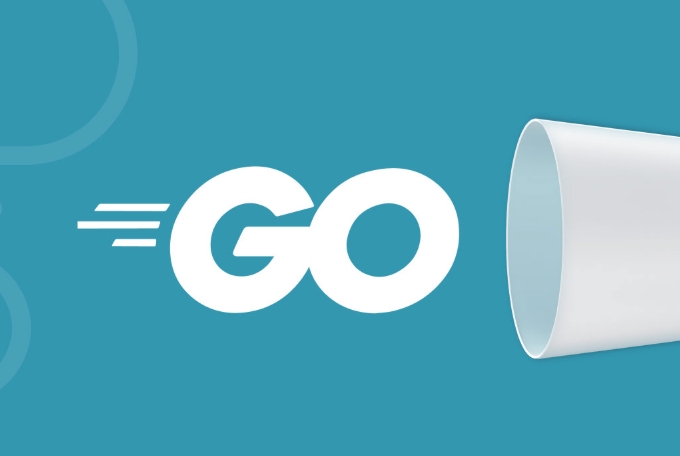What is the difference between a golang interface and a struct?
Jun 30, 2025 am 01:36 AMIn Go language, the core difference between a struct and an interface is that a struct is used to define the composition of data, while an interface is used to define behavior. 1. A structure is a blueprint of the data model, containing specific fields, used to represent entities and their properties; 2. The interface consists of method signatures, and any type that implements these methods automatically satisfy the interface; 3. The structure is often used in combination with the interface, and the behavior abstraction is achieved by adding methods to the structure to make it meet a specific interface; 4. The interface supports polymorphism and combination, making the code more flexible and extensible, while the structure provides specific data storage and operations.

In Go, the difference between an interface and a struct is pretty fundamental — they serve very different purposes in how you model and work with data and behavior.

A struct is like a container for data. It's how you define custom types made up of different fields — things like strings, integers, or even other structs. Think of it as a blueprint for creating concrete values ??with specific properties.

An interface , on the other hand, isn't about holding data. It's about defining what behaviors something must have. Interfaces specify a set of method signatures, and any type that implements those methods automatically satisfy the interface.
So to put it simply:

- Structs are about what your data looks like.
- Interfaces are about how your data behaves.
Now let's break this down further into more practical terms.
When to Use a Struct
You'll use a struct when you need to group related data together. For example, if you're building a user management system, a User struct might look like this:
type User struct {
ID int
Name string
}Structs are useful because:
- They give you a way to model real-world entities.
- You can add methods to them to encapsulate logic tied to that data.
- They're concrete — when you create one, you know exactly what fields and types it has.
For instance, if you want to print out a user's info, you could define a method:
func (u User) PrintInfo() {
fmt.Printf("User ID: %d, Name: %s\n", u.ID, u.Name)
}This keeps functionality close to the data it operates on.
What Interfaces Bring to the Table
Interfaces come into play when you want to abstract behavior. Instead of focusing on what something is, you focus on what it can do . An interface might look like this:
type Logger interface {
Log(message string)
} Any type that has a Log method with the correct signature automatically satisfyes this interface. That means both a FileLogger and a ConsoleLogger could implement it, each doing something different inside Log .
Why this matters:
- It allows for flexible code design — you can write functions that accept any type implementing the interface.
- It enables polymorphism in Go without needing inheritance.
- You can combine interfaces to build more complex behaviors.
Here's a simple function using the Logger interface:
func ProcessAndLog(logger Logger) {
logger.Log("Processing complete")
}Now, whether you pass in a file logger or console logger, it just works.
How Structs and Interfaces Work Together
One of the cool parts of Go is how structs and interfaces complement each other.
You often define structs to hold your data, then make them satisfied interfaces by adding methods. This lets you plug those structs into broader systems expecting certain behaviors.
For example:
- Define a
Databasestruct to hold connection details. - Add methods like
Save()andFind()so it satisfyes aStorableinterface. - Now you can write generic functions that accept anything that's
Storable.
This separation between data and behavior makes your code easier to test and extend.
Also, since interfaces are satisfied implicitly, you don't have to declare that a struct "implements" an interface — Go figures it out automatically.
A Few Gotchas to Keep in Mind
- Interfaces can be empty:
interface{}means “any type,” which is powerful but can lead to less type safety. - Structs can embedded interfaces: This is a common pattern for composition — mixing data and behavior from multiple sources.
- Interfaces are not classes: There's no hierarchy or inheritance in Go, just implementation through method matching.
So while Go doesn't support traditional OOP, its approach gives you flexibility without the complexity.
That's the core of how structs and interfaces different and how they work together. It's basically about separating data definition from behavior definition — and letting them plug into each other when needed.
The above is the detailed content of What is the difference between a golang interface and a struct?. For more information, please follow other related articles on the PHP Chinese website!

Hot AI Tools

Undress AI Tool
Undress images for free

Undresser.AI Undress
AI-powered app for creating realistic nude photos

AI Clothes Remover
Online AI tool for removing clothes from photos.

Clothoff.io
AI clothes remover

Video Face Swap
Swap faces in any video effortlessly with our completely free AI face swap tool!

Hot Article

Hot Tools

Notepad++7.3.1
Easy-to-use and free code editor

SublimeText3 Chinese version
Chinese version, very easy to use

Zend Studio 13.0.1
Powerful PHP integrated development environment

Dreamweaver CS6
Visual web development tools

SublimeText3 Mac version
God-level code editing software (SublimeText3)
 Is golang frontend or backend
Jul 08, 2025 am 01:44 AM
Is golang frontend or backend
Jul 08, 2025 am 01:44 AM
Golang is mainly used for back-end development, but it can also play an indirect role in the front-end field. Its design goals focus on high-performance, concurrent processing and system-level programming, and are suitable for building back-end applications such as API servers, microservices, distributed systems, database operations and CLI tools. Although Golang is not the mainstream language for web front-end, it can be compiled into JavaScript through GopherJS, run on WebAssembly through TinyGo, or generate HTML pages with a template engine to participate in front-end development. However, modern front-end development still needs to rely on JavaScript/TypeScript and its ecosystem. Therefore, Golang is more suitable for the technology stack selection with high-performance backend as the core.
 How to build a GraphQL API in golang
Jul 08, 2025 am 01:03 AM
How to build a GraphQL API in golang
Jul 08, 2025 am 01:03 AM
To build a GraphQLAPI in Go, it is recommended to use the gqlgen library to improve development efficiency. 1. First select the appropriate library, such as gqlgen, which supports automatic code generation based on schema; 2. Then define GraphQLschema, describe the API structure and query portal, such as defining Post types and query methods; 3. Then initialize the project and generate basic code to implement business logic in resolver; 4. Finally, connect GraphQLhandler to HTTPserver and test the API through the built-in Playground. Notes include field naming specifications, error handling, performance optimization and security settings to ensure project maintenance
 How to install Go
Jul 09, 2025 am 02:37 AM
How to install Go
Jul 09, 2025 am 02:37 AM
The key to installing Go is to select the correct version, configure environment variables, and verify the installation. 1. Go to the official website to download the installation package of the corresponding system. Windows uses .msi files, macOS uses .pkg files, Linux uses .tar.gz files and unzip them to /usr/local directory; 2. Configure environment variables, edit ~/.bashrc or ~/.zshrc in Linux/macOS to add PATH and GOPATH, and Windows set PATH to Go in the system properties; 3. Use the government command to verify the installation, and run the test program hello.go to confirm that the compilation and execution are normal. PATH settings and loops throughout the process
 Go sync.WaitGroup example
Jul 09, 2025 am 01:48 AM
Go sync.WaitGroup example
Jul 09, 2025 am 01:48 AM
sync.WaitGroup is used to wait for a group of goroutines to complete the task. Its core is to work together through three methods: Add, Done, and Wait. 1.Add(n) Set the number of goroutines to wait; 2.Done() is called at the end of each goroutine, and the count is reduced by one; 3.Wait() blocks the main coroutine until all tasks are completed. When using it, please note: Add should be called outside the goroutine, avoid duplicate Wait, and be sure to ensure that Don is called. It is recommended to use it with defer. It is common in concurrent crawling of web pages, batch data processing and other scenarios, and can effectively control the concurrency process.
 Go for Audio/Video Processing
Jul 20, 2025 am 04:14 AM
Go for Audio/Video Processing
Jul 20, 2025 am 04:14 AM
The core of audio and video processing lies in understanding the basic process and optimization methods. 1. The basic process includes acquisition, encoding, transmission, decoding and playback, and each link has technical difficulties; 2. Common problems such as audio and video aberration, lag delay, sound noise, blurred picture, etc. can be solved through synchronous adjustment, coding optimization, noise reduction module, parameter adjustment, etc.; 3. It is recommended to use FFmpeg, OpenCV, WebRTC, GStreamer and other tools to achieve functions; 4. In terms of performance management, we should pay attention to hardware acceleration, reasonable setting of resolution frame rates, control concurrency and memory leakage problems. Mastering these key points will help improve development efficiency and user experience.
 Go embed package tutorial
Jul 09, 2025 am 02:46 AM
Go embed package tutorial
Jul 09, 2025 am 02:46 AM
Using Go's embed package can easily embed static resources into binary, suitable for web services to package HTML, CSS, pictures and other files. 1. Declare the embedded resource to add //go:embed comment before the variable, such as embedding a single file hello.txt; 2. It can be embedded in the entire directory such as static/*, and realize multi-file packaging through embed.FS; 3. It is recommended to switch the disk loading mode through buildtag or environment variables to improve efficiency; 4. Pay attention to path accuracy, file size limitations and read-only characteristics of embedded resources. Rational use of embed can simplify deployment and optimize project structure.
 How to build a web server in Go
Jul 15, 2025 am 03:05 AM
How to build a web server in Go
Jul 15, 2025 am 03:05 AM
It is not difficult to build a web server written in Go. The core lies in using the net/http package to implement basic services. 1. Use net/http to start the simplest server: register processing functions and listen to ports through a few lines of code; 2. Routing management: Use ServeMux to organize multiple interface paths for easy structured management; 3. Common practices: group routing by functional modules, and use third-party libraries to support complex matching; 4. Static file service: provide HTML, CSS and JS files through http.FileServer; 5. Performance and security: enable HTTPS, limit the size of the request body, and set timeout to improve security and performance. After mastering these key points, it will be easier to expand functionality.
 Go select with default case
Jul 14, 2025 am 02:54 AM
Go select with default case
Jul 14, 2025 am 02:54 AM
The purpose of select plus default is to allow select to perform default behavior when no other branches are ready to avoid program blocking. 1. When receiving data from the channel without blocking, if the channel is empty, it will directly enter the default branch; 2. In combination with time. After or ticker, try to send data regularly. If the channel is full, it will not block and skip; 3. Prevent deadlocks, avoid program stuck when uncertain whether the channel is closed; when using it, please note that the default branch will be executed immediately and cannot be abused, and default and case are mutually exclusive and will not be executed at the same time.






